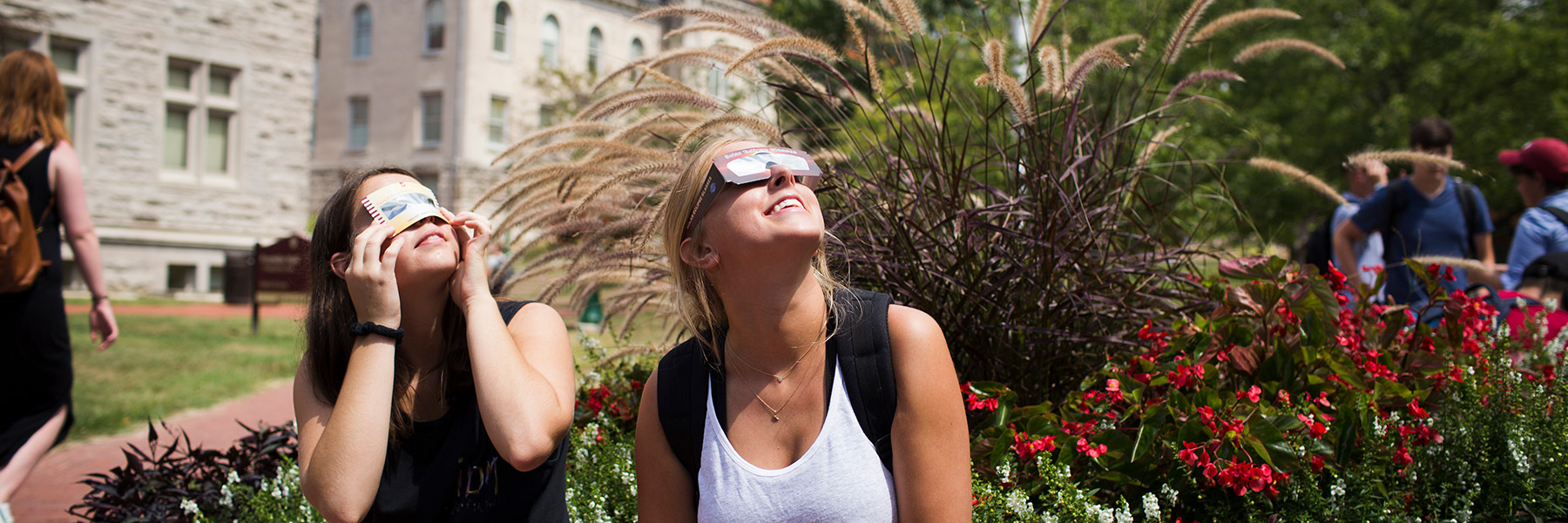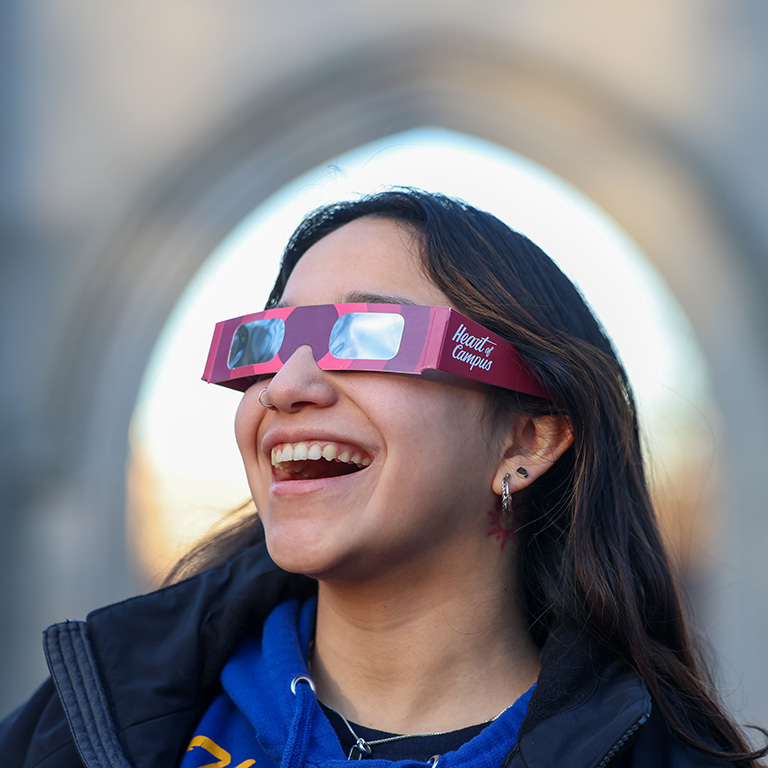During partial phases of the eclipse, it is not safe to look directly at the sun without proper eye protection. The best way to protect your eyes is to either view the eclipse indirectly using a pinhole projector, or to view it directly with an eclipse viewer.
When the sun is completely covered by the moon during totality, it is safe to remove eye protection and enjoy the view.


